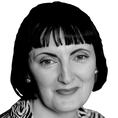'I don't love women writers enough to teach them. What I teach is guys. Serious heterosexual guys. F Scott Fitzgerald, Chekhov, Tolstoy. Real-guy guys. Henry Miller. Philip Roth."
This may sound like something a machismo lecturer in a Martin Amis novel might say, but these bon mots are from David Gilmour, a Canadian academic. Forget the Brontës, Marilynne Robinson, Anne Enright or Lorrie Moore: according to Floyd, people with two X chromosomes aren't worthy of being taught to aspiring writers. As ridiculous an attitude as it is, Gilmour's evisceration of women from his course highlights the ongoing disparity between how women writers are treated, and our gender-based attitudes towards fiction.
That views such as Gilmour’s still exist reinforces the need for Joanna Walsh’s Reading Women campaign. Walsh, an illustrator and short-story writer, started the #ReadWomen2014 hashtag on Twitter, to encourage readers to seek out women authors and rediscover women writers who have been overlooked or forgotten. “It started as a celebration of the names I’d written on the back of some New Year’s cards, which I posted online and invited others to tweet suggestions of women writers. I was astounded by how many people joined in,” says Walsh.
To accompany the online campaign she designed bookmarks of feted writers such as Marguerite Duras, Deborah Levy and Carson McCullers. The act of creating something physical and tangible also increased the visibility of both campaign and writers. "The bookmarks certainly gave it a focus," says Walsh. "I'm not sure it would have been so popular without them, but I want everyone to explore an aspect of women's writing they might not have otherwise."
Walsh was partly inspired by the Vida count, the latest of which was published last week. (Today is also International Women's Day.) A voluntary US study, it calculates both the gender balance of women reviewers and the number of books by women that get reviewed in US and UK newspapers and literary journals. Publications under scrutiny include Granta , the TLS and the Paris Review .
One of the most problematic offenders for gender balance was the London Review of Books . According to Vida, 82 per cent of its articles were by men. The LRB responded, in a statement on BBC Radio 4's Open Book , with a quote by one of its former (women) editors: "I think women find it difficult to do their jobs, look after their children, cook dinner and write pieces. They just can't get it all done. And men can. Because they have fewer, quite different responsibilities."
Before I stop typing to collect my children, let me make this point: if editors find they get fewer pitches from women (and make assumptions about what the reasons for that are), they should commission more women.
Vida's count is weighted towards US publications, but its methodology encouraged the Guardian to make its own examination. Last year the newspaper published statistics focusing on UK broadsheets and found that men outnumbered women as reviewers and authors by two to one in most cases. Prof Erin Belieu of Florida State University, a founder of Vida, believes gender is a fundamental issue. "When women are infrequently reviewed, or reviewed with coded language that emphasises their gender (which is pretty common), it sends a signal that women aren't to be taken as seriously as their male writer counterparts."
Statistically, more women than men buy books, but fewer men read books by female authors. There is often an assumption that writing by women focuses on personal, family and domestic issues – as if those topics have not been handled with the same degree of seriousness as male writers.
The presumption of less gravitas in women's writing is also linked to how women writers are represented. Last November I chaired a Dublin Book Festival panel with three writers (Nuala Ní Chonchúir, Christine Dwyer Hickey and Jennie Ridyard) who all said that they, and other women authors, are regularly asked more questions about their personal lives, families and relationships than male writers are. Do interviewers ask Ian McEwan how he juggles it all? Or ask male thirtysomething writers whether they want to have children?
Calling out bias helps, as does pointing out the imbalance. In Vida's case, various publications have taken on board the findings. Pamela Paul, editor of the New York Times books supplement, is "on record saying that making changes that bring about a more balanced mix of men's and women's voices isn't very hard to do", says Belieu. "The editor of the New Republic released a statement saying he knows his magazine has a big problem in this area and he's going to make serious efforts to address it. So the count has been influential."
With Vida’s important model, 2014 may yet become the year of reading more books and reviews by women.



















